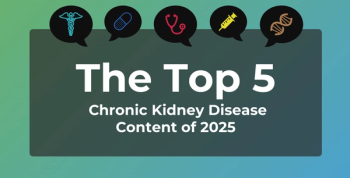
Contributor: Using Technology to Streamline Enrollment Into Available Medicare Subsidy Programs
Medicare Advantage plans can drive significant, sustainable, and scalable improvements to health outcomes; reduce cost; and boost retention and top-line revenue by enrolling beneficiaries into the comprehensive set of state and federal low-income programs available to them.
Approximately 32% of Medicare
Despite these enormous benefits, the underenrollment rate for Medicare beneficiaries is substantially higher than for the overall population due to low
Medicare Advantage (MA) plans are ideally positioned to solve this underenrollment problem. A total of 24 million people are enrolled in MA, comprising over one-third of all Medicare beneficiaries. MA plans have an incentive to help because enrollment improves health outcomes, reduces medical expenses, and makes health coverage more affordable. This gives MA plans a reason to sustainably scale their support, positioning MA as a powerful poverty reduction program.
Safety-Net Programs Reduce Poverty and Improve Health Outcomes
Seven core safety-net programs (Exhibit) help the millions of households below 150% FPL afford basic needs. For example,
By reducing out-of-pocket medical expenses and providing assistance for basic needs, these safety net programs not only ameliorate poverty but also improve health outcomes. Food and heating insecurity are major risk factors for health, and out-of-pocket medical expenses reduce access to health
Medicaid and MSP
Low-income Medicare beneficiaries spend over 30% of their
In addition, Medicaid covers services not covered by traditional Medicare including dental, vision, nonemergency transportation, and long-term services and supports (LTSS). There are 65% of Medicare
LIS and SPAPs
LIS and state pharmaceutical assistance programs (SPAPs) eliminate or reduce co-pays and deductibles for prescriptions for Medicare beneficiaries. A 2021 Harvard and UC Berkeley research
SNAP
SNAP helps low-income households afford groceries. Among Medicare beneficiaries who received Medicaid, 33.6% reported food
Enrollment Into Duals Programs Addresses Inequalities in Health Care Financing
Low-income and food-
Until CMS updates its MA risk-adjustment models to incorporate
Enrollment Support Is a Win-Win for MA Plans and Their Members
A more equitable allocation of capitation payments is just one way in which MA plans and their members benefit from reducing underenrollment. MA plans have multiple overlapping incentives to encourage enrollment into additional programs, giving MA plans reason to sustainably scale their support.
Improve Member Health
Enrollment into government programs is linked to improved health and reduced hospitalization, as described above. MA plans are incentivized to improve member health because, given their fixed capitation payment, they save from reduced health care spend.
Improve Member Satisfaction and Reduce Plan Churn
Enrollment into government programs directly addresses members’ top concern of affordability by reducing out-of-pocket medical expenses, so MA plans that provide enrollment assistance can improve member satisfaction and CAHPS scores. Low-income Medicare beneficiaries spend about $4000 out-of-pocket on
Increase Part C Capitation
CMS pays a higher risk-adjusted Part C annual capitation for duals, providing more resources for the plan to pay for lower-income and disabled individuals’ medical costs. The increase in payment varies by diagnostic condition and demographics, but partial and full duals have risk scores 20% to 100%
Reduce Out-of-Pocket Pharmacy Costs and Increase Part D Revenue
For LIS and some SPAP enrollees, CMS and states pay Part D premiums up to a
More Cost-effective Than SDOH-Focused Supplemental Benefits
MA plans spend $29 per member per month on supplemental
For the MA plan, supporting enrollment into safety-net programs is lower cost than directly providing supplemental benefits, and low-income members can often receive larger benefits from government programs. MA plans’ current supplemental benefit strategy risks creating a fractured social safety net. Instead, MA plans should prioritize enrollment support to build a more inclusive social safety net and make a bigger impact on members’ health and financial security.
Targeted Outreach and Simplified Applications Meaningfully Improve Enrollment
MA plans can learn from successful government and nonprofit pilot programs that have increased safety net program enrollment by addressing lack of awareness and administrative burdens through targeted outreach and case management support.
- Application
assistance to SSI/SSDI for people experiencing homelessness boosted approval rates from 10% to 73%. - Code for
America , in partnership with Michigan HHS, simplified applicants’ online document submission, improving Medicaid approval rates from 53% to 71%. - A cross-state policy comparison showed that higher
awareness of health insurance options was one of the strongest predictors of applying, increasing the odds by 12%.
Conclusion
Throughout the pandemic, recertifications were paused for safety-net programs, swelling the number of enrollees. Medicaid enrollment was up 14% over the last 18 months. Soon, states and the Federal government will move to reassess enrollees’ eligibility. This backlog will create an influx of demand for enrollment support for MA plans. To ensure that individuals do not lose access to benefits they’re entitled to, MA plans must improve their enrollment support for low-income members.
Authors
Jeremy Rubel is a graduate of The Wharton School of the University of Pennsylvania. He previously worked at Uno Health and the Massachusetts Executive Office of Health and Human Services.
Anna de Paula Hanika is the CEO and Cofounder of Uno Health, founded in 2018. She previously worked at Clover Health, Sum, and Google and graduated from the University of Oxford with a Masters in Psychology and Neuroscience.
Andrey Ostrovsky, MD, FAAP, was the former chief medical officer of the US Medicaid program. He is the managing partner at Social Innovation Ventures where he invests in and advises companies and nonprofits dedicated to eliminating disparities. He also advises federal and state regulators on how to incorporate human-centered design into policy making. He previously operated a series of methadone clinics in Baltimore, Maryland. Prior to working on the front line of the opioid use disorder crisis, he served as the chief medical officer for the Center for Medicaid and CHIP Services, the nation’s largest health insurer, where he advocated to protect the program against several legislative efforts to significantly dismantle the program. He also led efforts to streamline Medicaid and make it more customer centric. Before leading the Medicaid program, he cofounded the software company, Care at Hand, an evidence-based predictive analytics platform that used insights of nonmedical staff to prevent aging people from being hospitalized. Care at Hand was acquired in 2016 by Mindoula Health. Before Care at Hand, Dr Ostrovsky led teams at the World Health Organization, US Senate, and San Francisco Health Department toward health system strengthening. Dr Ostrovsky has served on several boards and committees dedicated to behavioral health, interoperability standards, quality measurement, and home and community-based services including the National Academies of Medicine, National Quality Forum, Institute for Healthcare Improvement, and the Commonwealth Fund.
Newsletter
Stay ahead of policy, cost, and value—subscribe to AJMC for expert insights at the intersection of clinical care and health economics.









































